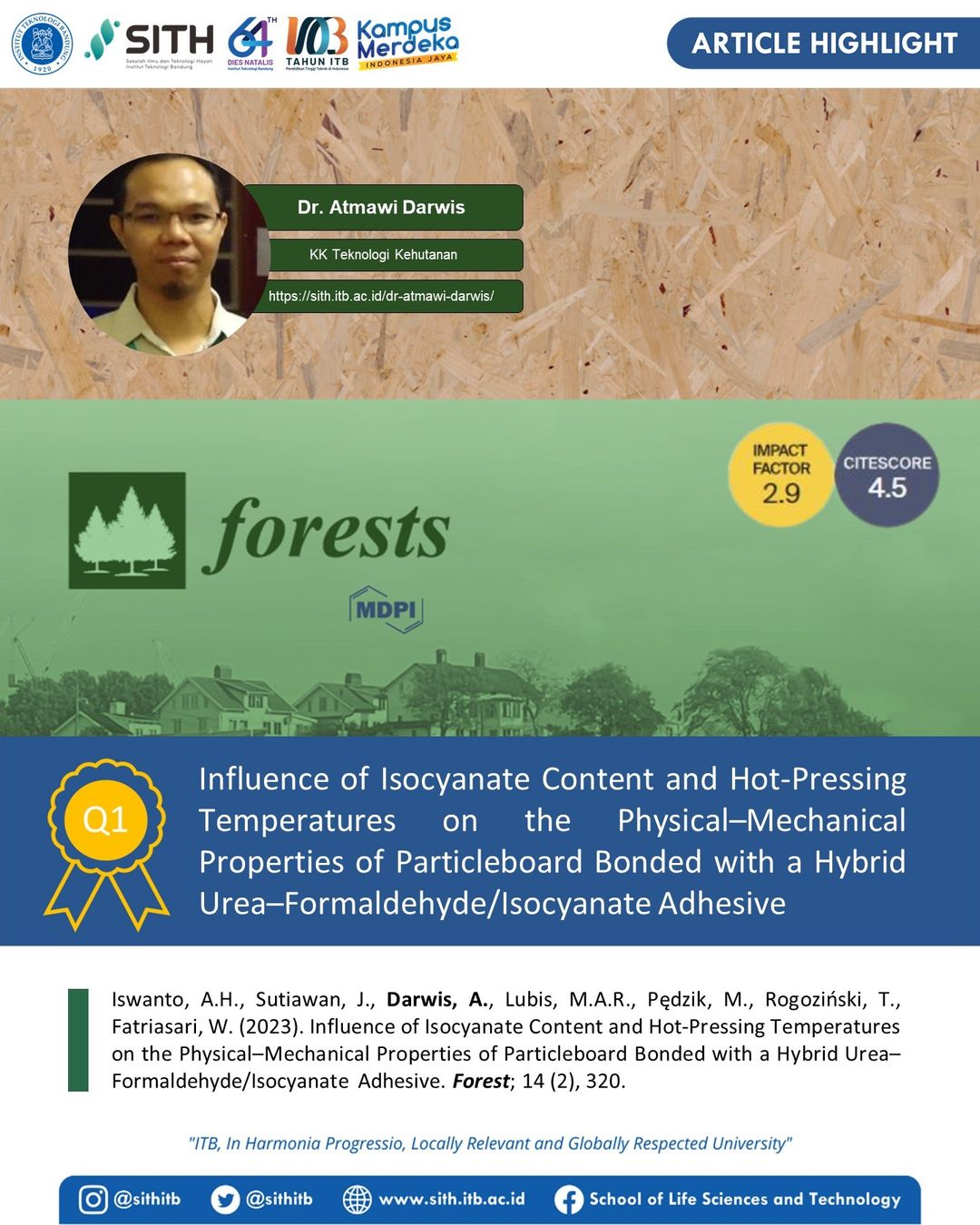Influence of Isocyanate Content and Hot-Pressing Temperatures on the Physical-Mechanical Properties of Particleboard Bonded with a Hybrid Urea-Formaldehyde/Isocyanate Adhesive

The low hydrolytic stability of urea–formaldehyde adhesive leads to poor water resistance by the particleboard. Dr. Atmawi Darwis and his colleagues analyze the effect of hot-pressing temperatures and the addition of methylene diphenyl diisocyanate in UF adhesive on the physical and mechanical properties of PB. The first experiment focused on pressing temperature treatments including 130, 140, 150, and 160 °C. Furthermore, the second experiment focused on UF/MDI ratio treatment, including 100/0, 85/15, 70/30, and 55/45 (%w/w), and the particles were pressed at 140°C. No significant difference was observed in the UF/MDI ratio between 85/15 and 55/45 using the same temperature. The increase in the MDI adhesive ratio improves the MOE and MOR values. However, the internal bond was the contrary. This study suggests that a combination of UF/MDI at a ratio of 85/15 and hot-pressing temperature at 140 °C could produce a PB panel that meets a type 8 particleboard according to the JIS A5908-2003 standard and type P2 according to the EN 312-2010 standard.
Article Citation:
Iswanto, A.H., Sutiawan, J., Darwis, A., Lubis, M.A.R., Pędzik, M., Rogoziński, T., Fatriasari, W. (2023). Influence of Isocyanate Content and Hot-Pressing Temperatures on the Physical–Mechanical Properties of Particleboard Bonded with a Hybrid Urea–Formaldehyde/Isocyanate Adhesive. Forest; 14 (2), 320. https://doi.org/10.3390/f14020320
Image:
Forests Journal cover
(Source: https://www.mdpi.com/journal/forests)
https://www.canva.com
Profile of Dr. Atmawi Darwis:
https://sith.itb.ac.id/dr-atmawi-darwis/


